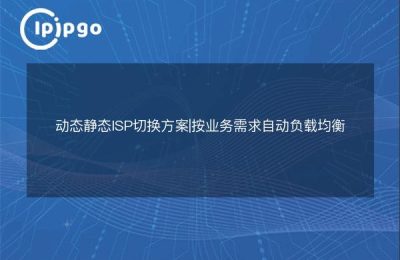
In today's age of information explosion, network security and privacy protection have become especially important. Home dynamic IP build proxy can not only improve network security, but also provide more network access options. This article will detail how to build a dynamic IP proxy in a home environment to make your network more flexible and secure.
What is a Dynamic IP Proxy?
A dynamic IP proxy is a proxy server that hides your real IP address and uses the IP address assigned by the proxy server for network access. Unlike static IPs, dynamic IPs change periodically, which makes it more difficult to track your online behavior and enhances privacy protection.
Why choose Home Dynamic IP Proxy?
There are many benefits to using a dynamic IP proxy in your home network. First, it can improve your network security against hacking and data leakage. Secondly, it can bypass IP restrictions on certain websites and provide more options for network access. In addition, a dynamic IP proxy can help you maintain a stable connection in different network environments.
How to set up a home dynamic IP proxy?
Setting up a home dynamic IP proxy is not complicated, just follow the steps below:
1. Selecting a suitable proxy server
First of all, you need to choose a reliable proxy server provider. There are many proxy server service providers in the market, and when choosing one, you should pay attention to factors such as their service quality, IP update frequency and price. It is recommended to choose those providers with good reputation and stable services.
2. Configuring the router
Most modern routers support proxy server configuration. Go to the router's management interface, find the Proxy Server Settings option, and enter the IP address and port number of the proxy server of your choice. After saving the settings, the router will automatically connect to the network through the proxy server.
3. Setting up the device agent
In addition to configuring the router, you can set up proxies individually on each device. For example, on a computer, you can configure a proxy server through your browser or system settings. On a cell phone, you can do this through network settings or by installing specialized proxy software.
Dynamic IP Proxy Usage Scenarios
Dynamic IP proxies have many application scenarios in daily life. Here are a few common examples:
1. Improving network security
With Dynamic IP Proxy, your real IP address is hidden and it is very difficult for hackers to trace your network behavior, thus improving network security.
2. Access to restricted content
Some websites restrict access to specific IP addresses, with a dynamic IP proxy you can bypass these restrictions and access more content.
3. Improving network stability
In some cases, the Internet connection may be unstable, using a dynamic IP proxy can help you maintain a stable Internet connection and improve your Internet experience.
caveat
When using dynamic IP proxies, you need to be aware of the following points:
1. Choose a reliable proxy server
It's important to choose a reliable proxy server provider; poor quality proxies can lead to unstable internet connections and even security risks.
2. Regular IP replacement
Although dynamic IPs are changed automatically, it is sometimes necessary to change the IP manually to ensure the stability and security of the network connection.
3. Protection of personal privacy
Using a dynamic IP proxy can improve privacy protection, but you should also be careful not to enter sensitive information on unsecured websites to protect your privacy.
concluding remarks
Home Dynamic IP Proxy is an important tool for improving network security and access flexibility. With the introduction of this article, I believe you have understood how to build a dynamic IP proxy in your home environment. By choosing the right proxy server and configuring your router and devices, you can enjoy a more secure and flexible network experience. I hope this article has been helpful to you, and I wish you a happy internet experience!








